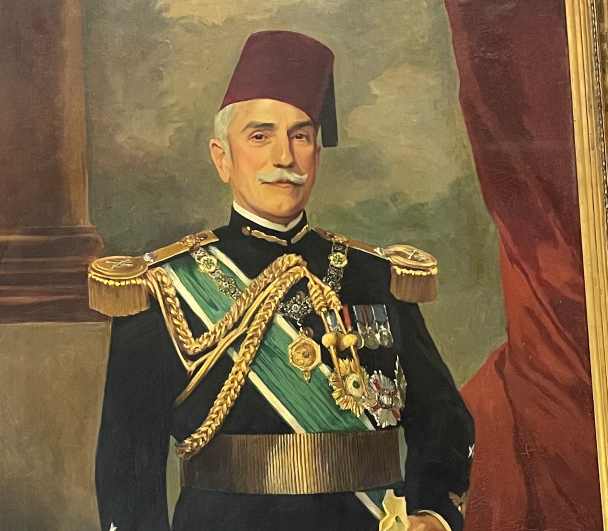When you hear the name Mohamed Ali, your mind usually goes to the great ruler of Egypt whose responsible for the massacre of the Mamluks at the citadel. But this is the story we know, we are here to tell you a different story that was forgotten over time. It is the story of Prince Mohamed Ali Tawfiq who came close to ruling Egypt three times but never did. He is the only male brother of Khedive Abbas Hilmi II, and the cousin of King Farouk. The prince was born in Cairo on Nov 9 1875 AD, and died on March 17 1954 in Lausanne in Switzerland, at the age of 78 years. In the island of Manial El Roda lies his fortified palace which was turned into a museum after his death upon his request. Upon visiting his palace, I came to the realization that his story is one filled with both tragedy and passion.
A tragic story with the throne
Amongst the tragic stories in the life of Prince Muhammad Ali Tawfiq, is his story with the throne of Egypt, as he assumed the position of the crown prince and regent for the throne three times. Each time he approaches to rule Egypt, events change in the last moments and the throne goes to another prince. He first occupied the position of crown prince during the reign of his brother Khedive Abbas Helmy II, until the Khedive had his son Prince Muhammad Abdel Moneim. The second time was after the death of his uncle King Fouad I in 1936, however, his cousin King Farouk took over after completing the legal age. This time was different, Prince Mohamed Ali became the guardian of the throne because his cousin, King Farouk did not reach the legal age to take the throne. Farouk’s mother, queen Nazli resorted to obtaining a Fatwa from Al Azhar to calculate the age of King Farouk in the hijri years as they were shorter than the gregorian years. She did that to hasten to put her son on the throne and take away any chances from Prince Mohamed Ali of seizing the throne from him. The third time was when he was appointed crown prince of King Farouk, until Farouk gave birth to his son, Prince Ahmed Fouad in 1951. During this period, the prince built a palace for himself and it was a hall that he called the throne hall, perhaps waiting for the opportunity in which he can ascend to the throne of Egypt.
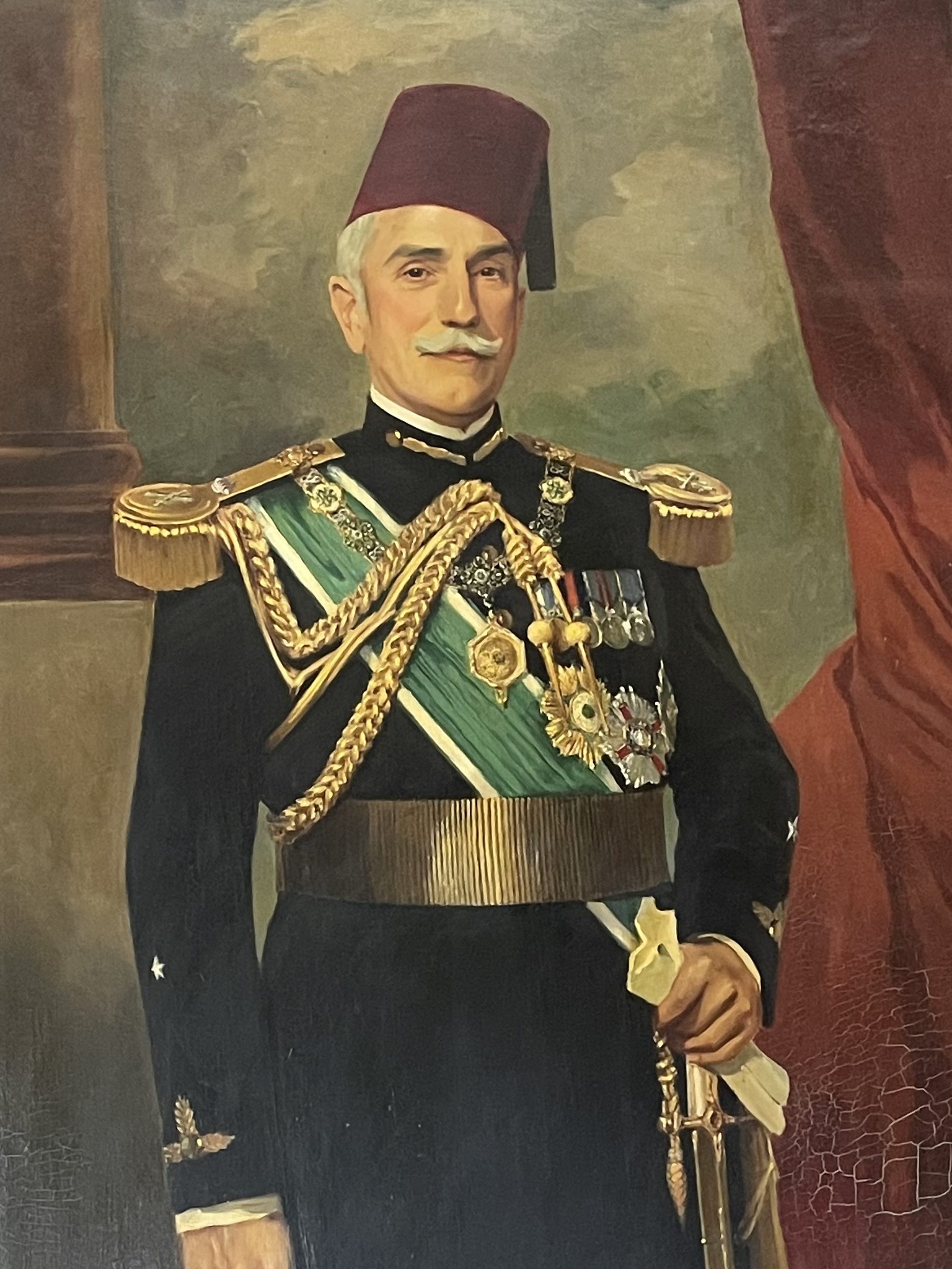
A prince with taste
The construction of the Manial palace began in 1901, on an area of more than 60,000 square meters. Prince Muhammad Ali Tawfiq oversaw the development of its engineering and architectural designs and asked that his palace be turned into a museum after his death. The palace includes three sarays, namely, the throne saray, the reception saray, and the residence saray. It also contains a mosque, clock tower, a hunting museum, the golden hall, in addition to the garden surrounding the palace. The palace is unique in its distinctive architectural design, which still retains its splendor, from the colors of the inscriptions and decorations despite the passage of more than 100 years. The prince was known for his keen eye which sought out the rarest and most beautiful objects which he decorated his palace with. In addition to his own collection, he received many gifts from foreign kings and princes, as well as the collections he inherited.
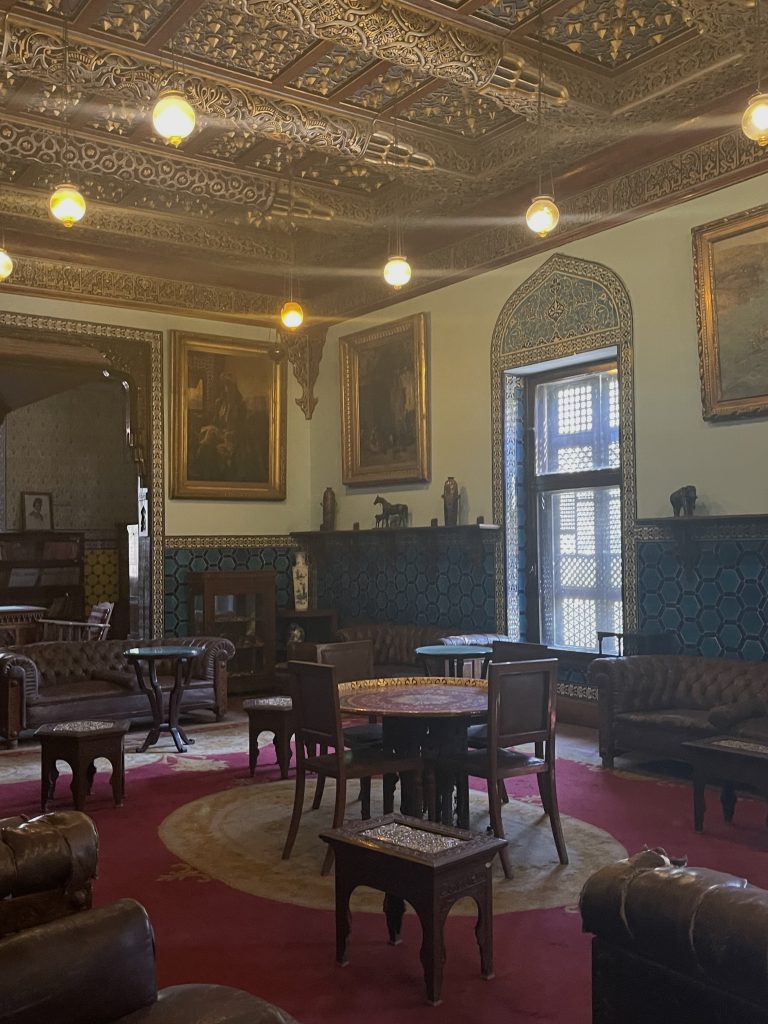
The throne saray is distinguished by its royal characteristics and the beauty of its inscriptions and decorations. It is where Prince Mohamed Ali used to receive his guests during occasions and holidays. The ceiling is covered with sun disk, golden rays and it contains luxurious maroon red furniture consisting of gilded sofas and chairs adorned with large paintings of Egyptian rulers. The residence saray is the main palace, and one of the first buildings that was built. It was the residence of the prince, and consists of two floors, and the first floor includes several rooms, including the harem room (a room for the ladies), the mirror room, and the blue salon room. The second floor includes the prince’s bedroom and bathroom.
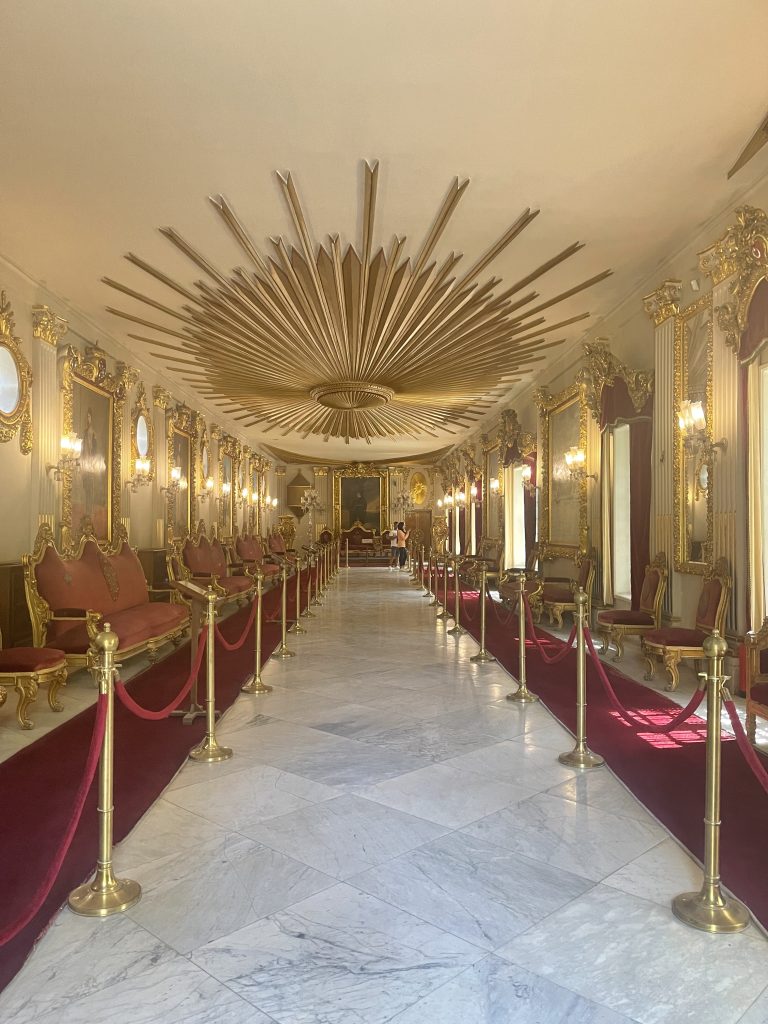
Surrounding the beautiful palace is the royal gardens including a collection of cacti, palm trees and other rare plants collected by Prince Mohammed Ali from all over the world. The mosque is one of the highlights of the visit to the palace. Even though it is small in size, its beauty transforms you into the Islamic period from the moment you walk into it. On your right, you will see the mihrab (niche) decorated with blue ceramic tiles and a small minbar (pulpit) decorated with gilded decorative ornaments.
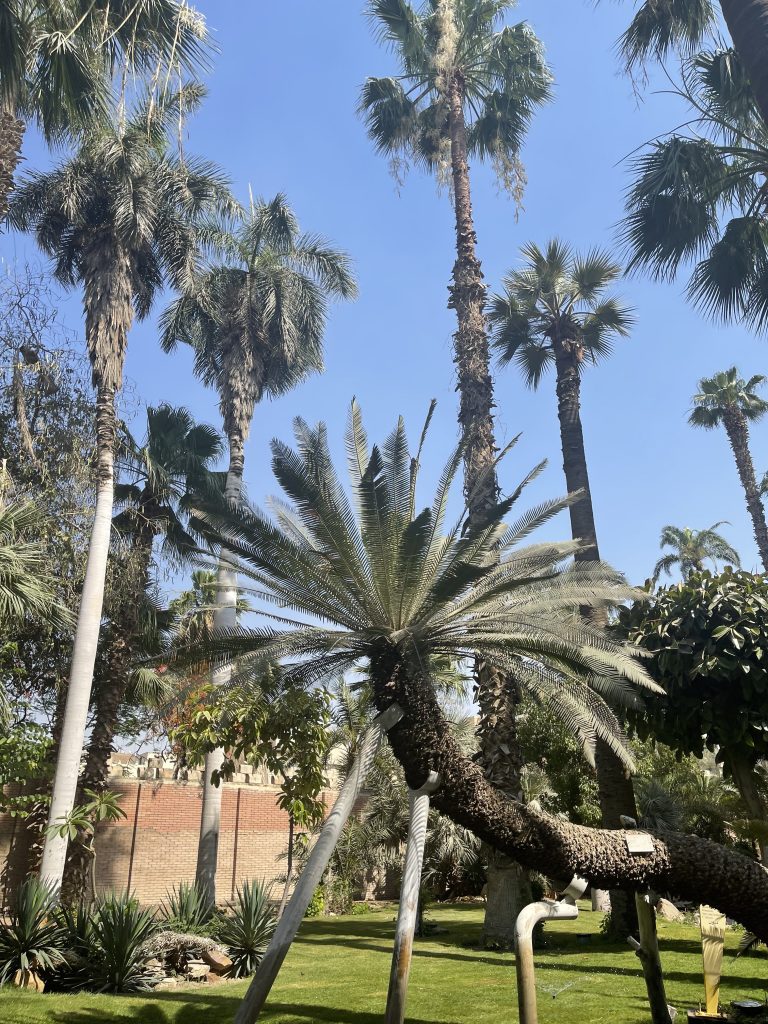
The hunting museum
After the revolution of July 1952, collections of taxidermy were combined at the palace to be exhibited inside a large corridor devoted to housing a new museum of hunting. Upon entering the museum you will be greeted with a friendly face of a tour guide that tells you the story of the museum and the animals in it. The prince owned a large number of taxidermied animals, some of which he hunted and others which he received as gifts while he was the crown prince of Egypt. The collection includes a variety of taxidermied animals including stuffed birds, crocodiles, heads and horns of deers, exotic butterflies and much more. The one that strikes most was the taxidermied lion, it was so realistic you could almost hear it roar.
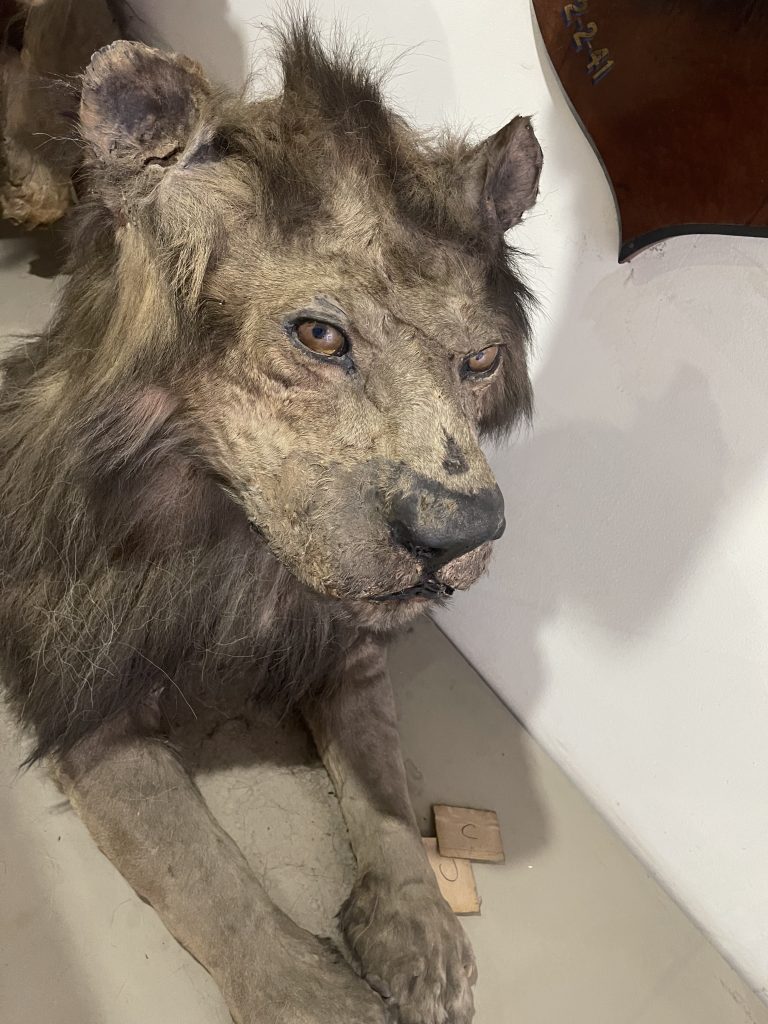
My tour guide, Ahmed told me that the hunting museum was once a horse stable during the times of the prince. You can even see the windows which the horses used to dangle their faces from. The prince was one of the most famous Arab stallions’ breeders and has published a number of books in that area, including two volumes titled “About Arabian Stallions” and another one titled “About Stallions in Egypt.” He was passionate about drawing Arabian stallions and representing the grace and beauty of their
anatomical details. “So that no one can fully understand the Arab stallions unless he lives for a while with Arab people and studies their history (and traditions), and explore ancient literature written in their
own language” written by the prince for the French World Sports Magazine. According to Ahmed, although the prince had an accident while riding that led to his infertility, his admiration for horses didn’t fade. To commemorate his love for stallions, the prince kept the skeleton of his horse which he named “El Manial” after the neighborhood where the palace exists.
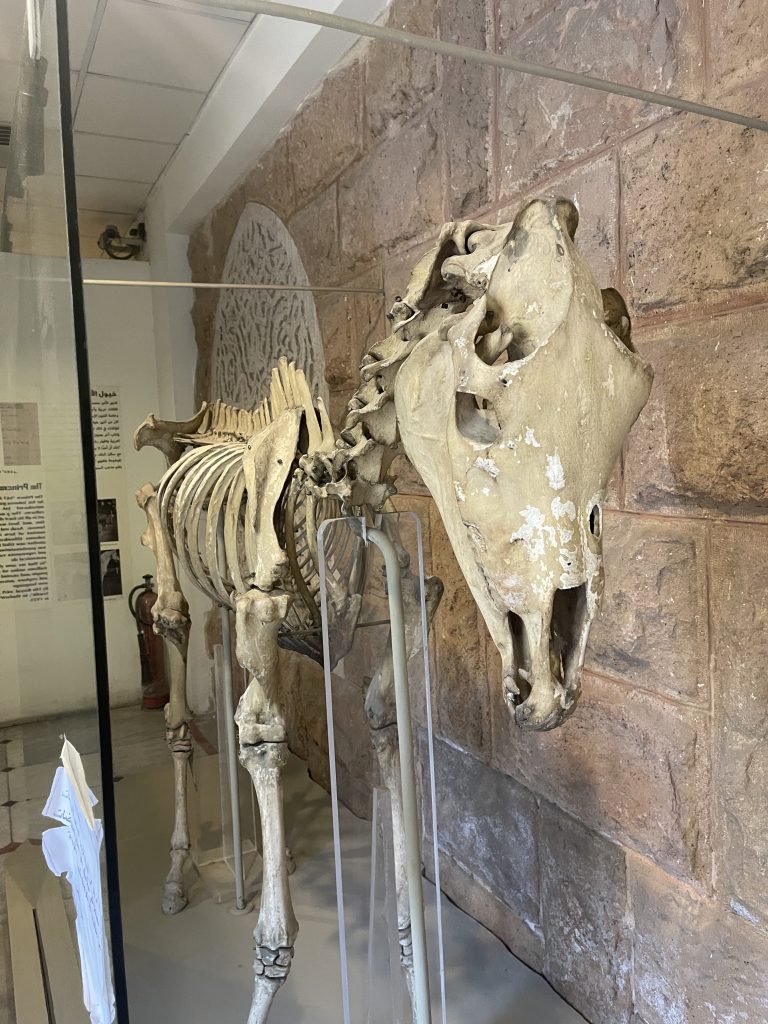
Ladies of the Palace
Some thought that Prince Muhammad Ali Tawfiq did not marry due to the fact that he did not have children, but the truth is that he was married to Alice, a French woman whom he met during one of his travels in Australia. He offered to marry her and to return with him to Cairo and she became the lady of the palace. The prince suffered fertility problems and was unable to conceive. His mother is lady Amina Hanem Ilhami, also known as “umm al-Muhsinayn”, wife of Ibrahim Ilhami. His mother devoted her life to public work and sponsoring the needy and sick in charitable societies, so she was nicknamed “the mother of the benefactors” and was keen to establish many public and industrial schools, and sent scholarships abroad at her expense.
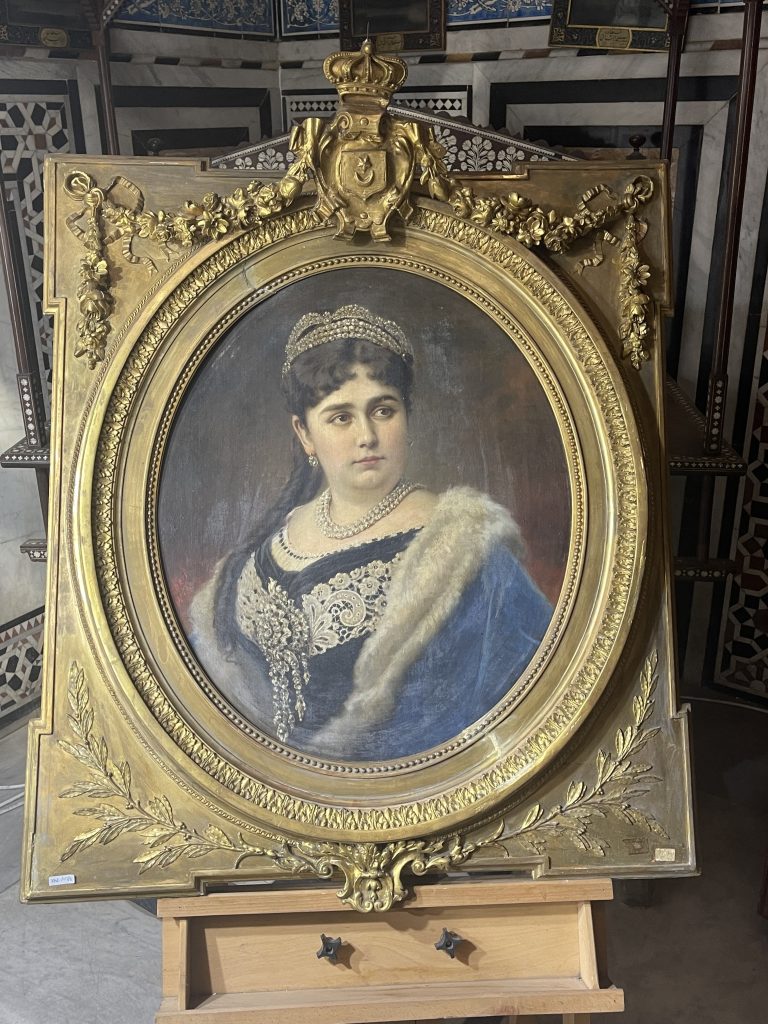
The prince came so close to becoming king. Even though his story with the throne is a tragic one, he lived a fulfilling life. The Mohamed Ali palace and museum perfectly commemorates his life and leaves and still celebrates his legacy to this day.
WE SAID THIS: Don’t miss… A Palace Of A Thousand Stories: Inside The Historical Abdeen Palace’s Museums


